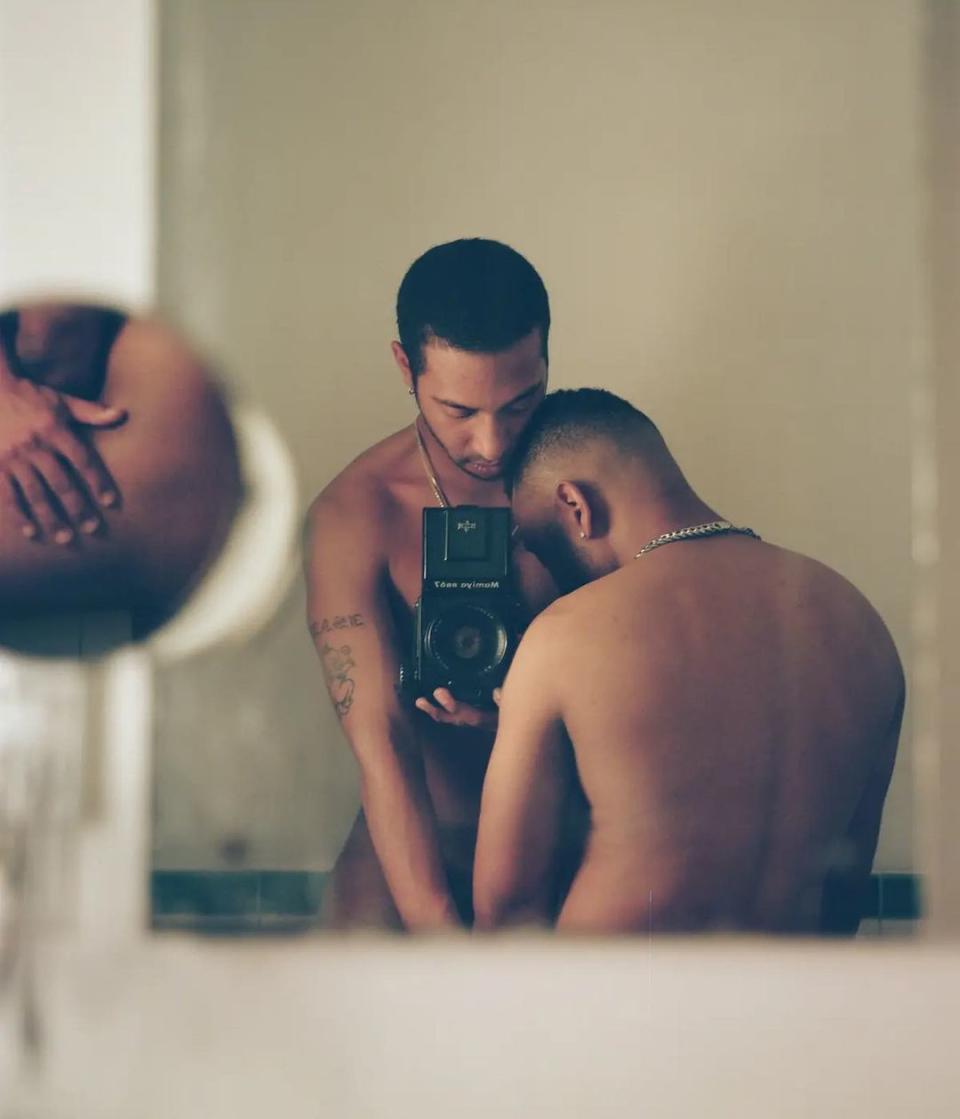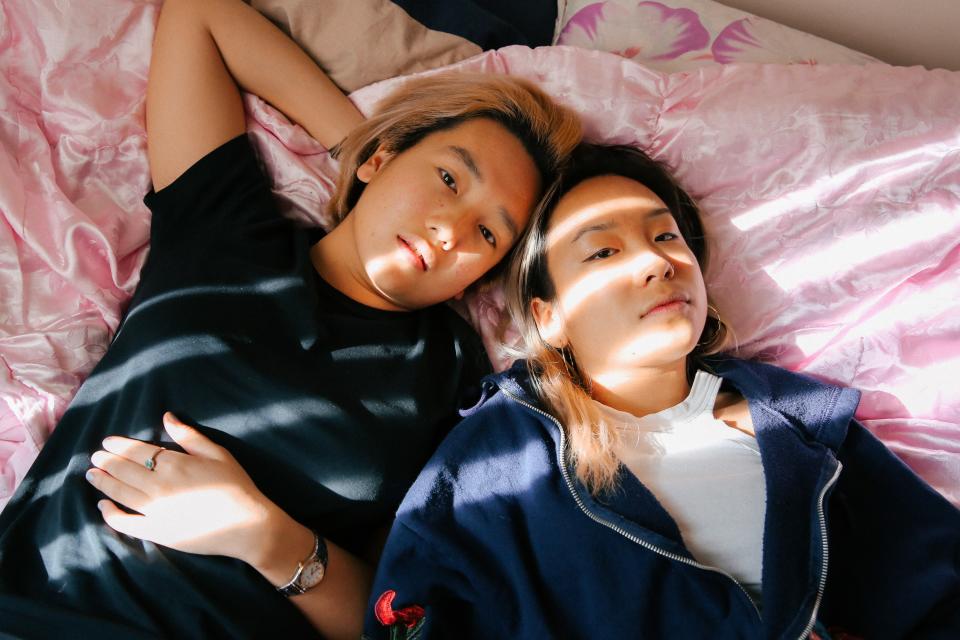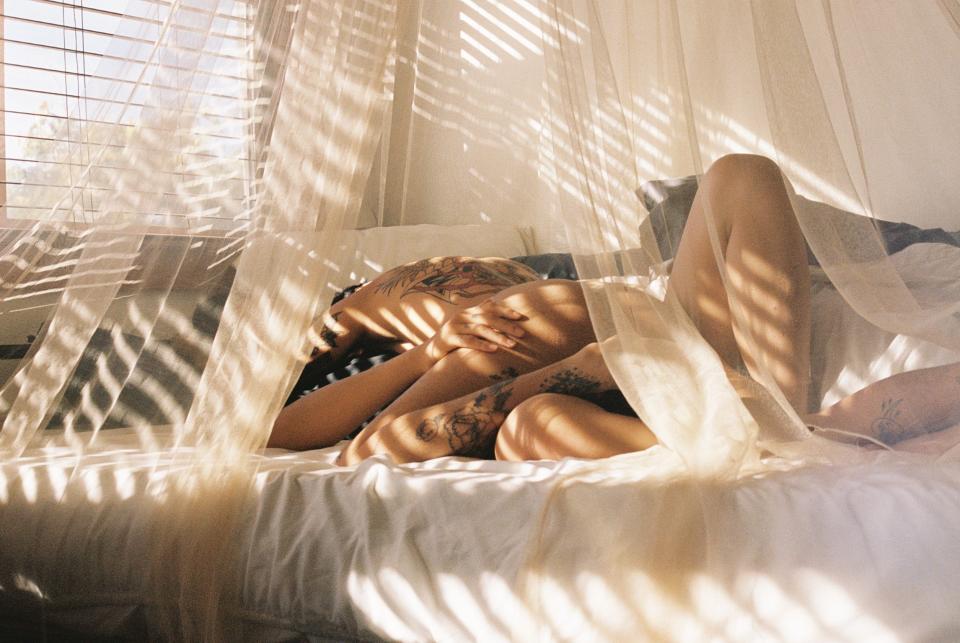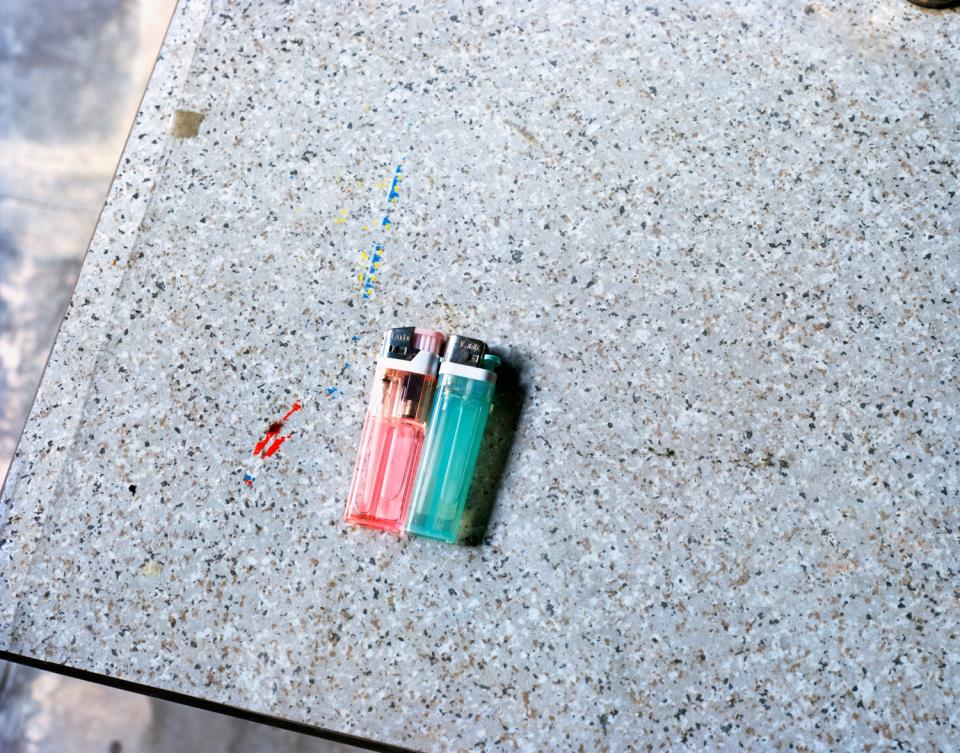Inside the Intimate New York Photography Exhibition Celebrating Queer Chosen Families
In the new exhibition “CHOSEN,” which opened at the Leslie-Lohman Museum of Art in New York City on Friday and online through the design studio and curatorial platform TRNK, eight photographers share their vision of what the queer chosen family means today. There is an image by the two-spirit photographer Coyote Park, featuring a tattooed couple’s embrace on a bed under dappled sunlight. In another shot by Clifford Price King, a moment of intimacy between two Black men is punctuated by the reflection of a hand caressing a waist in a shaving mirror. In a cheekier example, Hong Kong-born photographer Ka-Man Tse captures two cigarette lighters, one pink and one blue, sitting side by side on a speckled gray surface.

It seems that for most of the participating artists, our current moment of reconnection—especially within queer communities—is best captured in images of striking intimacy, highlighting the power of physical contact after a year in which so many of us were distanced. “When we first sat around the table and were riffing on ‘chosen’ as an idea, we definitely realized there was that added poignancy and resonance of bodies touching,” says Alyssa Nitchun, who was appointed director of the Leslie-Lohman earlier this year after stints at Creative Time and CUNY’s Center for LGBTQ Studies.

On this, Nitchun’s collaborator—the co-founder of TRNK, Tariq Dixon—firmly agrees. “As corny as this may sound, love is a universal language,” he says. “That’s the one emotion that we all experience and pursue and yearn for, and I think we’ve been reminded of that over the past year in so many ways. The idea of chosen family comes about because love and connection can’t always be assumed in our biological families, and I think it’s important to remind each other that we’re all similar and have that shared yearning to be loved, to be held, to experience intimacy. It’s something universal, something that you just viscerally understand.”
As one of the first projects that Nitchun has undertaken since arriving at the Leslie-Lohman, the “CHOSEN” exhibition speaks to her vision for the future of the museum. (Alongside the physical exhibition, which will see a rotating lineup of four pairs of artists presented in dialogue across eight weeks, there will also be an online display of the art for those unable to make the show in person.) A longtime friend of Dixon’s, Nitchun was particularly inspired by “MIEN,” an exhibition that Dixon premiered on the TRNK platform during Pride last year, when it came to planning for Pride month 2021. “MIEN” featured photographs by queer artists of color available at accessible price points, and all proceeds were donated to the Ali Forney Center to combat LGBTQ+ homelessness in New York City.

“For us, it’s always been about accessibility,” Dixon says of how these online exhibitions fit into TRNK’s broader philosophy. “We always want to reach new audiences, so the goal of it is just to inspire. Plus, I think it’s a rare opportunity [for people to] actually own some of these works and then look at them every day. I wholeheartedly hope that there will be young people who fall in love with the images and are inspired by them, but then also have the privilege to live with them. So I’m very grateful to the artists who shared that vision and the desire to make that work. It’s rare that happens.”

Indeed, beyond the exhibition’s tender message—and, of course, a celebratory spirit that feels perfectly in sync with the first in-person Pride celebrations in two years—its accessibility was firmly the priority. The photographs included will be available to purchase from a starting price of $250 via TRNK, with 25% of proceeds going to the Leslie-Lohman. (First established as a commercial gallery at the end of the 1960s, the AIDS crisis saw the SoHo-based institution evolve into a museum as it began to acquire work by queer New York artists who had passed away. It remains to this day the only dedicated LGBTQ+ art museum in the world.)
While the Leslie-Lohman has faced many of the same challenges as countless other museums and galleries around the world, overcoming them has not only been galvanizing, but has also opened new pathways for communicating the museum’s vision to those far beyond its Lower Manhattan base. “I mean, the museum was closed for about a year because of COVID, and so we, like many cultural institutions, were forced to reimagine what we do and expand our digital community,” Nitchum explains. “But the silver lining has been that I think it’s brought about some of our best programming, as we’re forced to be both global and digital.”

And as Nitchun astutely points out, the need for queer institutions like the Leslie-Lohman to harness the power of digital outreach isn’t just a consequence of the pandemic; it also speaks to the many queer communities around the world whose voices are silenced. Given the Leslie-Lohman’s chameleonic history, its digital expansion feels like just another—and very logical—chapter. “We were very conscious of making sure there was a range of voices, whether that’s sexuality, or gender expression, but also across generations,” says Dixon.
“And it’s not just about COVID restrictions, either,” Nitchun continues. “There are so many people around the world where the idea of a public celebration of pride is still a wild dream. At the end of the day, the hope is really just that some kid somewhere, hiding under their bedroom covers and looking at these photographs on spotty WiFi, will feel some sense of validation and being seen. To know that they’re not alone.”
Originally Appeared on Vogue

